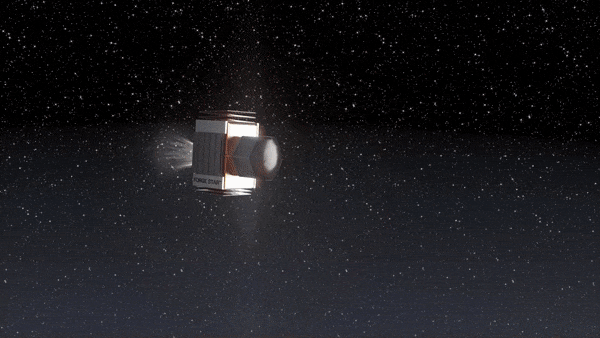
A private company has plans to test a revolutionary new heat shield that folds and unfolds like origami.
The new heat shield built by Cardiff, UK-based company Space Forge is called Pridwen, named after the shield donned by King Arthur. Pridwen will be the company's first prototype that will undergo a test including a reentry through Earth's atmosphere, and is progressing toward a launch later this year.
ESA recently posted an update on the origami heat shield to the space agency's website, adding that Pridwen will be a part of Star Forge's ForgeStar-1A mission that will launch on a ride-share flight aboard a SpaceX Falcon 9 rocket.
Related: NASA's inflatable flying saucer aces Mars heat shield reentry test
Following payload release and the probe's ensuing trajectory back to Earth, the heat shield will deploy prior to atmospheric reentry and be recovered using Star Forge's "hover net," an uncrewed water vessel designed to catch payloads returning from space, according to a company statement.
Pridwen is made of a high-temperature alloy fabric, and uses origami-inspired folding techniques to decrease its size and occupy as little physical space as possible while not in use. Typical ablative heat shields are as wide as whatever spacecraft they are shielding. They are rigid and heavy, and rely on the gradual burning off of material to deflect heat absorption away from the spacecraft.
Pridwen's ability to deploy and expand its size creates a surface area large enough to evenly distribute and radiate heat away without damaging the shield's fabric, which allows it to be folded up and stowed again for reuse.
The origami shield's increased size also creates sufficient air-drag to slow its descent enough to eliminate the need for parachutes. Leading up to Pridwen's first atmospheric test flight, Space Forge has conducted drop tests at altitudes up to 10.5 miles (17 km), and has been rehearsing to catch the probe with a hover net during its fall back to Earth.
#Pridwen: A reusable heat shield that allows for the safe atmospheric re-entry of #satellites 🛰Unlike standard ablative heat shields, it won't burn up upon re-entry. Check out our test drop ⬇️https://t.co/cfhF0g8UbZ@esa #Space #ForgeStar pic.twitter.com/BvpAKhyZ5RMay 25, 2023
As a company, Space Forge has much loftier goals than just producing heat shields. For Space Forge, Pridwen serves as a stepping-stone into a soon-to-be-booming space manufacturing industry. Manufacturing in a zero-g environment can come with advantages to certain products such as superconductors, pharmaceuticals and fiber optics.
The header on Space Forge's homepage states that "the next industrial revolution isn't on Earth." With several companies currently vying to create commercial space stations in low Earth orbit (LEO), reusable hardware capable of cheaply and routinely returning goods to Earth could very well be in high-demand.
The Pridwen project has been under development for more than four years with support from the UK Space Agency, and as a part of the European Space Agency's (ESA) General Support Technology Programme (GSTP), which helps evolve budding technologies for use in space.
NASA tested a similar heat shield concept in 2022 called LOFTID (short for Low-Earth Orbit Flight Test of an Inflatable Decelerator). LOFTID consisted of an inflatable, expanding shell designed to slow a spacecraft's entry through the atmosphere of Mars and reduce the amount of heat created by atmospheric friction acting on the craft.
A launch date has not yet been set for Star Forge's ForgeStar-1A mission, but the company says it could happen sometime later in 2023.







